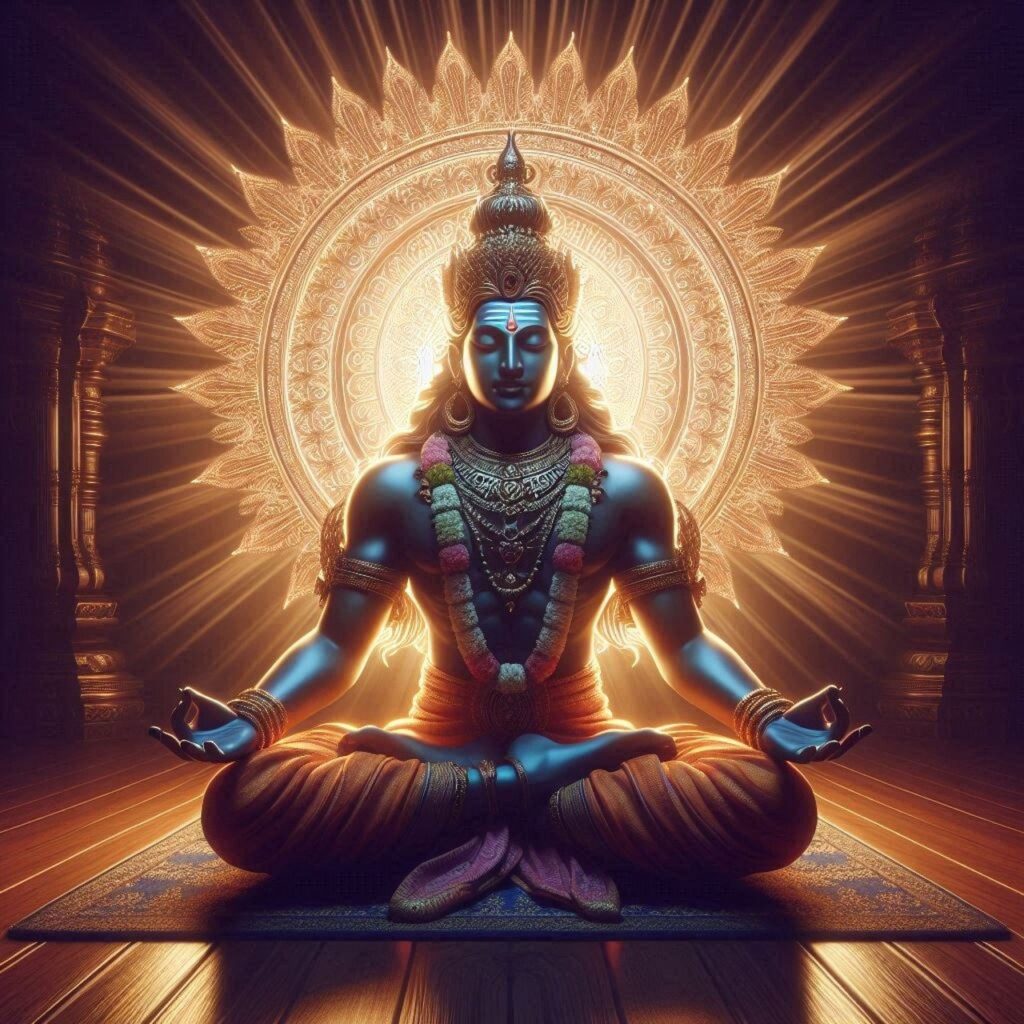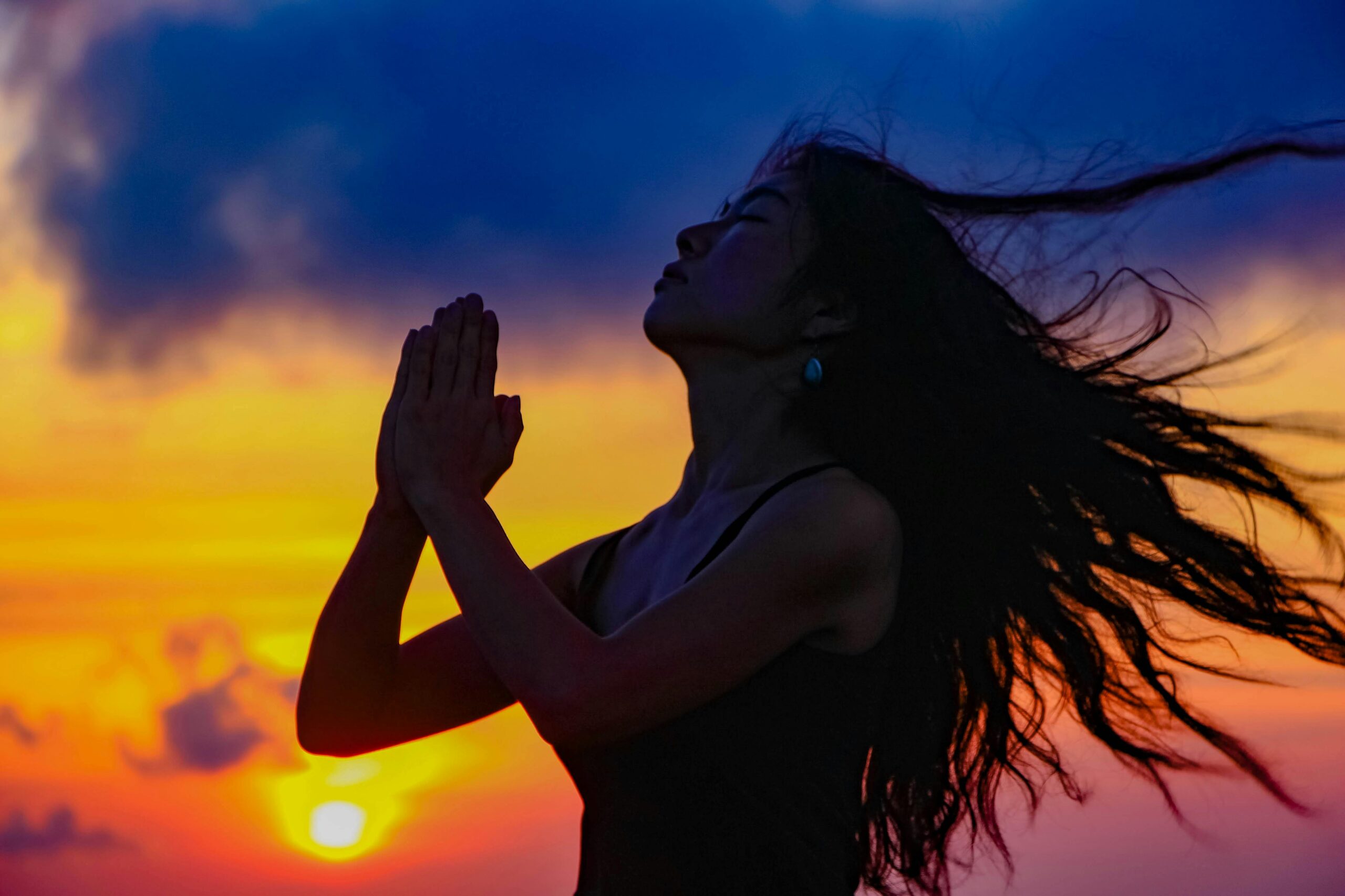The Hindu Trinity is a captivating concept in Hinduism, symbolizing three fundamental gods: Brahma, Vishnu, and Shiva. Each deity serves a distinct purpose within the cosmic framework, making the Trimurti vital for grasping Hindu cosmology. Let’s explore their individual roles and how they work together to uphold the balance of the universe.
Table of Contents
Brahma: The Creator in the Hindu Trinity and His Role in the Cosmos

Brahma’s Origin and Symbols
Brahma, the Creator, holds a special place in the Hindu Trinity. According to tradition, Brahma emerged from a lotus flower that sprouted from Vishnu’s navel. This lotus symbolizes the origin of the universe, marking the beginning of cosmic creation. Brahma is depicted with four heads, each representing a different aspect of the Vedas, the ancient sacred texts. These heads also symbolize the four Yugas, or ages, through which the universe evolves.
Brahma’s Role
Brahma’s main role in the Hindu Trinity is to create the universe and everything in it. He shaped the earth, the heavens, and all living beings. Despite his vital role in creation, Brahma isn’t as widely worshipped as Vishnu and Shiva. This is partly because his work is considered complete, making his significance more about the past rather than the present.
Vishnu: The Preserver in the Hindu Trinity and His Role in Maintaining Cosmic Balance

Vishnu’s Avatars
Vishnu is honored as the Preserver, tasked with maintaining cosmic balance and harmony. To address disruptions in the universe, he incarnates in various forms known as avatars. His ten principal avatars, collectively called Dashavatara, include well-known figures like Rama and Krishna. These avatars emerge during pivotal moments to restore order and righteousness, as detailed in the epic tales of the Ramayana and Mahabharata.
Symbols and Worship
Vishnu is often depicted with a blue complexion, symbolizing his infinite and omnipresent nature. His four main attributes include a conch shell, a discus (Sudarshan Chakra), a mace, and a lotus flower, each representing a different aspect of his power and role in preserving the universe. Vishnu is widely worshipped, with numerous temples dedicated to him across India and beyond.
Shiva: The Transformer in the Hindu Trinity and His Role in Renewal and Destruction

Shiva’s Dual Nature
Shiva, known as the Transformer or Destroyer, plays an important role in the cycle of life by breaking down the old to make way for the new. This destruction isn’t seen as bad; it’s a necessary step for renewal and growth. Shiva has both fierce and gentle sides: as Rudra, he represents fierce energy and destruction, while as Shankara, he symbolizes peace and kindness. This duality shows how destruction and creation are connected.
Symbols and Worship
Shiva is often shown with a third eye, representing his ability to see beyond ordinary perceptions and understand deeper truths. He carries a trident (Trishula) that symbolizes his control over the three realms and the three aspects of time: past, present, and future. Devotees of Shiva often meditate and chant mantras like “Om Namah Shivaya.” His temples are typically found in peaceful, natural settings, reflecting his connection to nature and the spiritual world.
How the trinities Works Together
The Interplay of Creation, Preservation, and Destruction
The Trinity shows how Brahma, Vishnu, and Shiva work together to sustain the universe. Each deity has a unique role—creation, preservation, and destruction—that supports the others. Their functions are interdependent, ensuring the ongoing cycle of life and maintaining cosmic balance.
Philosophical Implications
The Trimurti, or Hindu trinity, represents the cyclical nature of existence in Hindu philosophy. Creation, preservation, and destruction are seen as interconnected phases that keep the universe balanced. This view helps followers understand the temporary nature of life and the importance of each phase in the cosmic process.
Cultural and Spiritual Impact
Influence on Hindu Culture
The Trimurti, or Hindu trinity, impacts not just religious beliefs but also cultural and spiritual realms. Their stories and teachings provide deep insights into existence and balance, shaping various Hindu festivals and rituals. The Trimurti is a central theme in many cultural expressions and spiritual practices, highlighting their lasting significance in Hindu life.
Spiritual Lessons from the Trimurti
The Trimurti offers valuable lessons about existence and the importance of balance. By understanding their roles, one gains insights into the cyclical nature of life and the necessity of each phase in maintaining cosmic harmony.
Conclusion
In summary, the Trimurti—made up of Brahma, Vishnu, and Shiva—represents a complex yet harmonious system of cosmic functions. Each deity has a unique role that contributes to the ongoing cycle of creation, preservation, and destruction. Understanding their roles provides deep insights into Hindu beliefs and the broader spiritual perspective of the universe.
FAQs
- What are the main functions of Brahma, Vishnu, and Shiva?
- Brahma is the Creator, Vishnu is the Preserver, and Shiva is the Transformer or Destroyer.
- Why is Brahma less worshipped compared to Vishnu and Shiva?
- Brahma’s role in creation is considered complete, and his function is more historical, unlike Vishnu and Shiva, who are actively involved in maintaining and transforming the universe.
- What are the key avatars of Vishnu and their significance?
- Vishnu’s key avatars include Rama and Krishna, who appear during critical times to restore cosmic order as depicted in Hindu epics.
- How does Shiva’s dual nature reflect in Hindu beliefs?
- Shiva’s dual nature shows the balance between destruction and creation, highlighting the necessity of both for the renewal and growth of the universe.
- How does the Trimurti influence Hindu culture and spirituality?
- The Trimurti’s stories and teachings influence Hindu festivals, rituals, and spiritual practices, offering deep insights into the nature of existence and balance.

1 thought on “Understanding the Hindu Trinity: The Roles of Brahma, Vishnu, and Shiva in Cosmology”